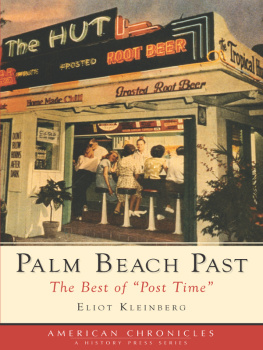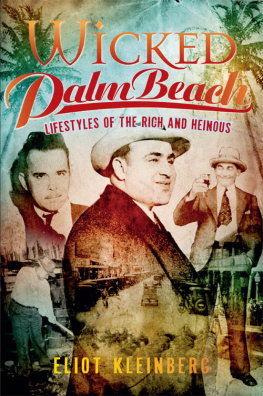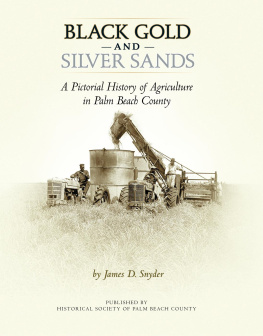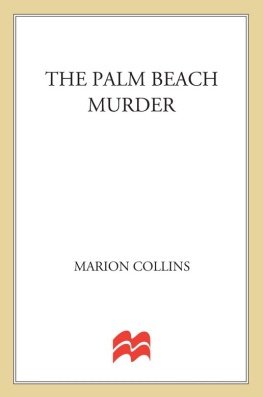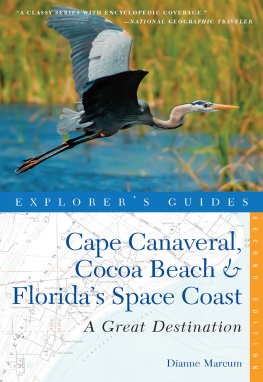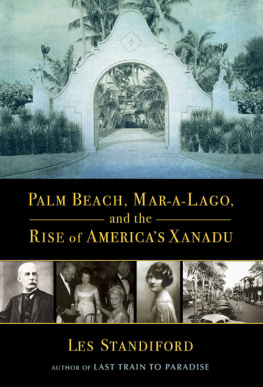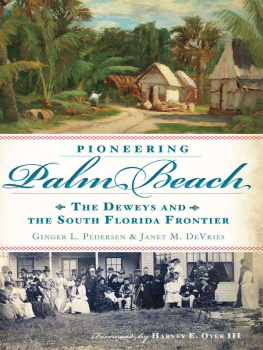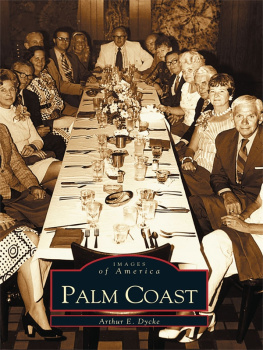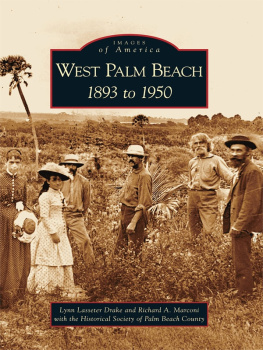

Published by The History Press
Charleston, SC 29403
www.historypress.net
Copyright 2006 by Eliot Kleinberg
All rights reserved
Cover Image: The Hut was a popular hangout for high school students. Courtesy Saturday Evening Post.
First published 2006; Second printing 2008
e-book edition 2012
ISBN 978.1.61423.318.3
Library of Congress Cataloging-in-Publication Data
Kleinberg, Eliot.
Palm Beach past : the best of Post time / Eliot Kleinberg.
p. cm.
Collection of articles originally published as the authors newspaper
column Post time in the Palm Beach post from January 2000 to December 2005. print edition ISBN 978-1-59629-115-7 (alk. paper)
1. Palm Beach County (Fla.)--History--Anecdotes. 2. Palm Beach County
(Fla.)--Biography--Anecdotes. 3. Palm Beach County (Fla.)--History,
Local--Anecdotes. I. Title.
F317.P2K55 2006
975.932--dc22
2006008105
Notice: The information in this book is true and complete to the best of our knowledge. It is offered without guarantee on the part of the author or The History Press. The author and The History Press disclaim all liability in connection with the use of this book.
All rights reserved. No part of this book may be reproduced or transmitted in any form whatsoever without prior written permission from the publisher except in the case of brief quotations embodied in critical articles and reviews.
All material in this book was originally published in the Palm Beach Post and is reprinted by permission.
Sources
These historical societies, museums and sites were the sources for many of the Post Time columns.
Africa U.S.A.: www.africa-usa.com
Arthur R. Marshall Foundation: www.artmarshall.org
Boca Raton Historical Society: www.bocahistory.org
Boynton Beach Historical Society
Delray Beach Historical Society: www.delraybeachhistoricalsociety.org
Florida Historical Society: www.florida-historical-soc.org
Henry Morrison Flagler Museum: www.flagler.org
Historical Society of Martin County: www.elliottmuseumfl.org
Historical Society of Palm Beach County: www.historicalsocietypbc.org
Lake Park Historical Society
Lawrence Will Museum at Belle Glade Public Library:
www.pbclibrary.org/lew.htm
Loxahatchee River Historical Society: www.lrhs.org
Morikami Museum and Japanese Gardens: www.morikami.org
Museum of the City of Lake Worth: www.lakeworth.org
Palm Beach Post: www.palmbeachpost.com
Preservation Foundation of Palm Beach: palmbeachpreservation.org
Contents
Introduction
Who was the barefoot mailman?
Does Boca Raton really translate to mouth of the rat?
Which famous developer had a pet monkey?
If youve wondered about the answers to those questions related to the history of Palm Beach County, youre not alone. South Florida is heavy with transplants. As newcomers, they know little about Floridas history, and much of what they know is wrong, courtesy of theme parks, roadside stands and amateur historians.
In January 2000, the Palm Beach Post debuted Neighborhood Post, special tabloid-sized sections distributed to specific parts of the market and each filled with news focusing on that particular neighborhood.
Since then, more than four hundred installments of Post Time have appeared.
This book-length collection features the best one hundred of those published, from the first column in January 2000 to the end of December 2005.
Whether you love Palm Beach County history or dont know the first thing about it, I hope youll enjoy these columns and learn a little about the place.
And keep those questions coming!
I
How it All Started
Why is your column called Post Time?
Besides the obvious historical allusions, its an homage to this newspapers lineage. A great way to spot an old-timer is if he or she refers to the Palm Beach Post as the Post-Times.
The Post was founded as the weekly Palm Beach County in 1909, the same year the county was carved out of Dade. In January 1916, it went to daily publication and switched to its current name. In 1934, it was bought by Colonel E.R. Bradley, owner of Palm Beachs famed casino. He owned it throughout the Depression and war years and sold it in 1947 to the Perry family, owner of twenty-eight newspapers. When his father died in 1953, John Perry took over the chain. Perry, an engineer, businessman and inventor, sold the Post in 1969 to Cox, owner of newspapers, broadcast outlets, car auctions and cable companies.
The Palm Beach Times was founded September 8, 1922. Bradley bought it and the Post in 1934; it followed the Post to Perry and Cox. The two newspapers published a joint Sunday edition. Operators answered the phones Post-Times.
The Palm Beach Times was renamed the Evening Times in 1979. Less than a decade later, it would go the way of most afternoon papers, falling victim to the evening television news. In May 1987, it merged with the Palm Beach Post and the afternoon edition of the Post carried both mastheads.
On September 25, 1987, the last newspaper bearing double mastheads was published, and the Evening Times was history.
Originally published June 27, 2001
What was here before Palm Beach County?
A mosquitoactually, a lot of themand a county name. Thats just one of five different counties that once included present-day Palm Beach County.
The states first two counties were Escambia, which mostly encompassed the panhandle, and St. Johns, which covered most of the peninsula. In 1824, Mosquito County was formed from St. Johns; it sprawled from near Daytona Beach all the way to Miami and over to the Fort Myers area.
This area would later be part of Dade (now Miami-Dade) County, but it wasnt when Dade was first formed in 1836. It stayed in Mosquito County. The new Dade County covered six thousand square miles but started at the Hillsboro River, which now separates Boca Raton and Deerfield Beach. It stretched to the upper Keys and over to the south shore of Lake Okeechobee. At that time, the census counted about five hundred people in the southern portion of the Florida peninsula.

A postcard from around 1924 shows Clematis Avenue in downtown West Palm Beach. Courtesy Seth Bramson.
In 1844, this area became part of St. Lucie County, created from Mosquito County; it went from Cape Canaveral to near Orlando, south to near Pompano Beach and west to Lakeland. But about a decade later, Dade County expanded north to the St. Lucie Inlet. In 1889, the county seat moved from Miami to Juno, a settlement several miles from present-day Juno Beach that was later abandoned. Dade Countys population had grown to about one thousand. A decade later it had expanded to five times that.
In 1907, a move to split off a new county from Dade failed. But two years later, another attempt worked. Palm Beach County was formed on April 30, 1909. There were about five thousand residents. West Palm Beach was named the county seat. Palm Beach County shrank to its current boundaries in May 1925, when portions of Palm Beach and St. Lucie Counties were split off to form Martin County.
Next page
